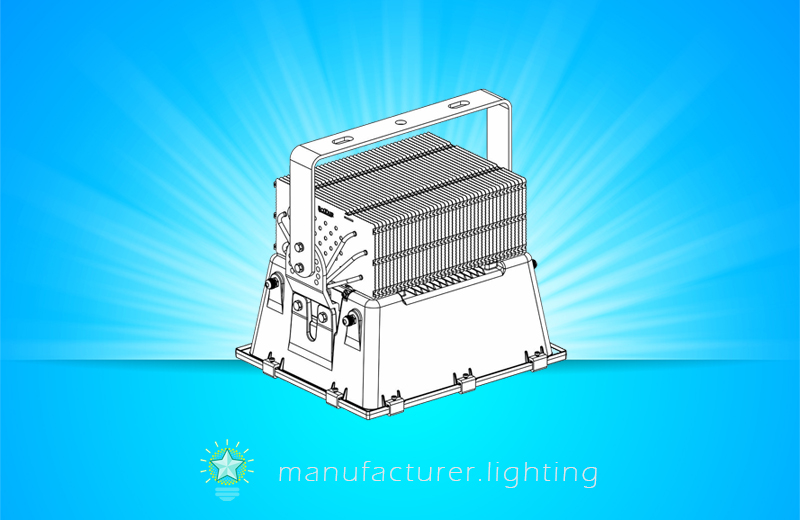
Outdoor sports lighting is designed to provide sufficient light to allow for sporting events to take place during the twilight and evening hours in athletic fields which include football fields, soccer fields, baseball fields, and tennis courts.
Luminaires for sports lighting applications are offered with a wide choice of styles, wattages and optical characteristics. Luminaire optical performance is part of the design selection process, along with proper locations and mounting heights, required to provide an effective lighting system. Since indoor and outdoor applications involve unique challenges, lighting equipment is specifically classified for indoor or outdoor usage. Visibility is one particular initial basic concern. Other concerns including attainment of a specific level of illumination; distribution of light; uniformity of illuminance in various areas of the playing area; cost of lighting installations; life-cycle costs of lamps; luminaire efficiencies; beam patterns of the delivered illumination; effects of light trespass or spill light (e.g., light on neighboring areas); human perception of opposing players; revealing the spin of a ball and its path of travel; glare; and many other aspects of lighting all will need to be considered. Typical light sources for sports lighting systems include metal halide, fluorescent and light emitting diodes (LED). LED luminaires have a high lumen maintenance factor and provide good color rendition. LEDs offer several advantages which could present an opportunity for improved sports lighting systems in the future. These benefits include great optical efficiency, low sensitivity to operating position, instant on/off, full range dimming, wider selection of color temperatures and improved optical control. The upgraded optical control possible with LEDs provide lighting designers with the option to more accurately control the light beam, significantly minimizing off site spill and glare as opposed to traditional high-wattage metal halide lighting systems.